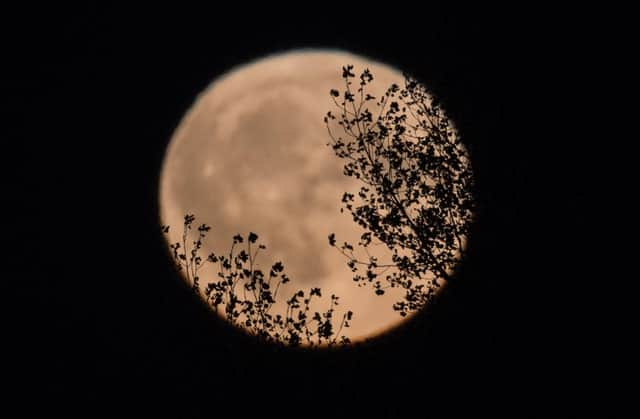Buck moon 2020: how to see the July full moon this weekend from the UK - and meaning behind it


This weekend (5 July) will see a so-called ‘Buck Moon’ rising over the skies of the UK.
In previous months, we've witnessed Snow Moons, Wolf Moons and even a Strawberry Moon.
Advertisement
Hide AdAdvertisement
Hide AdNow another dazzling bright full moon is in store, but what is the Buck Moon and how can you see it?


Here’s everything you need to know:
What is a Buck Moon?
Despite its name, the moon won’t be growing a set of impressive antlers – the ‘Buck Moon’ tag is simply applied to the full Moon in July or the first full Moon of summer.
That’s because in recent years, traditional Native American names for the full moons have become more common in modern day parlance.
According to the Maine Farmer's Almanac - which first published the Native American names for the full Moons in the 1930's - the name comes from the Algonquin tribes of what is now the northeastern United States.
They called this full Moon the Buck Moon as early summer is normally when the new antlers of buck deer push out of their foreheads in coatings of velvety fur.
They also called the July full moon the Thunder Moon, because of early summer's frequent thunderstorms.
The same full moon went under many other traditional names in other parts of the world; over on the other side of the Atlantic, in Europe the July full moon was known as the Hay Moon for the haymaking in June and July.
When can I see it?
July’s full moon will be in the night sky on the evening of Sunday 5 July.
Advertisement
Hide AdAdvertisement
Hide AdWhile the moon will technically be at its fullest at around 4.45am on that day, it won't be visible in the sky until it rises that night at around 9pm.
It won’t set again until roughly 4.50am in the early hours of Monday morning, meaning it will be visible in all its glory throughout the night – clear skies permitting of course.
What is a penumbral lunar eclipse?
The Buck Moon also ties in with a penumbral lunar eclipse.
During a penumbral lunar eclipse, the moon passes through the edges of the 'shadow' that our planet casts into space, in which a portion - but not all - of the Sun's light is obscured.
Don't go looking to the heavens with expectations that are too high; there will be no red glow like you might see with a total lunar eclipse.
During a penumbral eclipse, the moon simply dims as it passes through the Earth's penumbral shadow, and only those who stay up until the early hours of Monday morning which catch the tail end of its effects just before moonset.
The eclipse will start at 4.07am, and the moment of maximum eclipse as seen from the UK will fall at about 4.41am.
